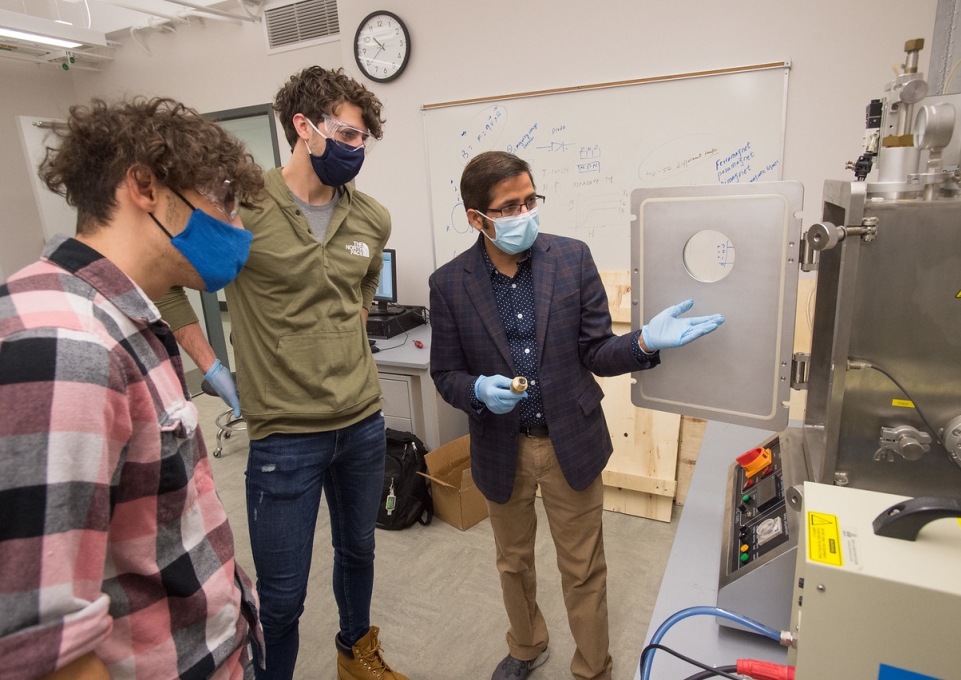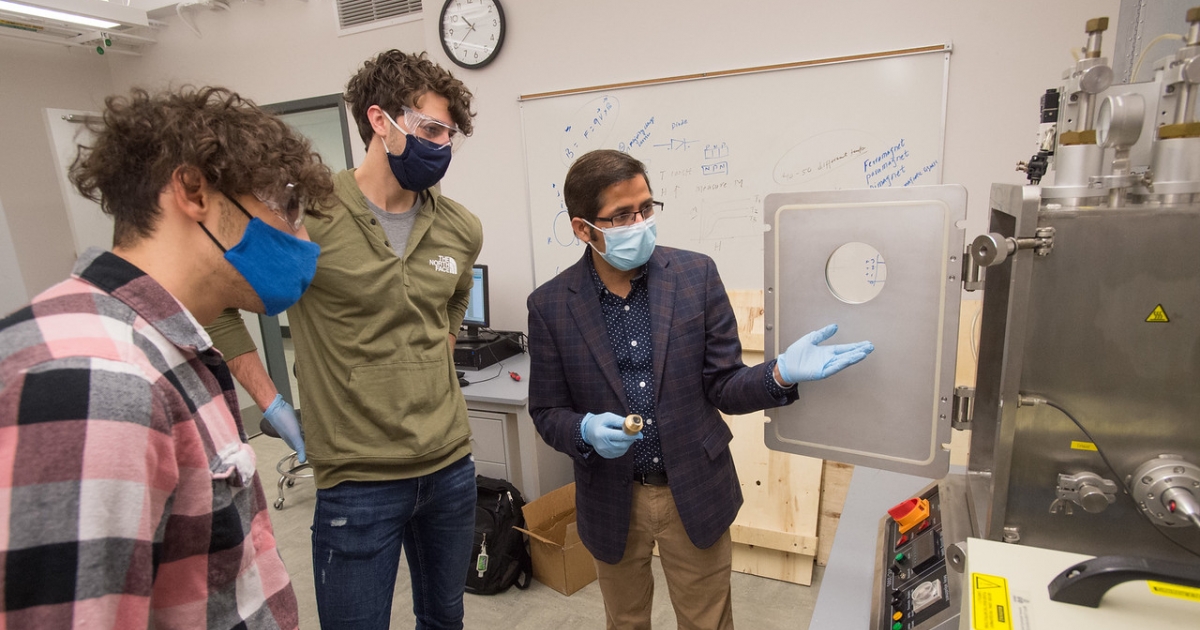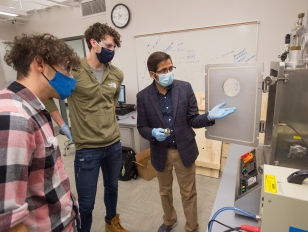
Last fall, when Arjun Pathak, Buffalo State College assistant professor of physics, tapped sophomore Randall Filippone to join him in a research project, Filippone thought there must be a mistake.
“I asked, ‘Isn’t undergraduate research only for juniors and seniors?’” said Filippone, an electrical engineering technology (ETT) major. “I had no idea you could have this kind of opportunity so early.”
Through Buffalo State’s unique Early Undergraduate Research Opportunity (EURO) Program, Filippone started testing metallic compounds in the physics lab last fall. He continued the project this spring, working with Pathak to find alternatives to the expensive magnets needed for everything from computers to cooling systems to automobiles. The permanent magnet they’re working on is timely research. President Joe Biden just signed an executive order to secure America’s supply chain for elements for semiconductor materials, critical minerals, rare earth elements, and electric vehicle batteries.
The EURO program allows lower-division students to serve as research and creative assistants to faculty mentors. They receive $1,000 for 10-week projects and $500 for five-week micro projects. This year, students will present their findings at the virtual 23rd annual Student Research and Creativity Conference (SRCC) at the end of the spring semester in May.
“Targeted to students with 12 to 60 earned credits, the EURO is designed as a retention incentive,” said Carolyn Guzski, interim director of the Undergraduate Research Office and associate professor of music. “Lower-level students get to sink their teeth into substantive research under the tutelage of professors.”
“The beauty of the digital modality is that these projects will remain online and people can look at them at any time. Students can link to their work for grad school applications. In that sense, COVID has helped us expand our reach.”
Hosted on Buffalo State’s Digital Commons page, the SRCC features research papers, posters, oral presentations, and other applied-learning projects across the college’s five schools. The SRCC went digital last May, when Buffalo State was adjusting to the beginning months of the coronavirus pandemic, and still some 200 students participated.
While the ongoing pandemic has presented some challenges, Guzski said, she’s been pleased with the quality of research projects that students are pursuing in a rewarding mix of disciplines.
They include two projects by international relations majors. One examined democratic backsliding in nation-states with recently elected authoritarian regimes, while the other collected and coded data on gender equality provisions included in global conflict termination agreements.
On the other side of the spectrum, an art and design major and an anthropology major worked together to design a scholarly volume on New York state archaeology that anthropology faculty members Susan Maguire, associate professor, and Lisa Marie Anselmi, associate professor and department chair, are editing for the New York State Museum Record.
“Their creative talents are definitely a plus,” Maguire said. “They’re familiar with Adobe Photoshop and InDesign and are used to working with different types of images. The pandemic made it more difficult to coordinate the process, but the campus’s IT department was able to provide them with access to the Adobe Creative Cloud so that they could work remotely.”
The fact that college students were born into the digital age has meant a relatively smooth transition to conducting and presenting research remotely, Guzski noted.
“The beauty of the digital modality is that these projects will remain online and people can look at them at any time,” she added. “Students can link to their work for grad school applications. In that sense, COVID has helped us expand our reach.”
Because most science laboratories have remained open with social distancing measures throughout the pandemic, Filippone has been able to conduct his magnetic research in person, complementing it with data plotting from home.
“He’s done an incredible job,” Pathak said “and probably spent 20 hours per week more than required in the lab.”
Filippone also coauthored an article on his EURO work that was recently accepted by the international Journal of Physics: Condensed Matter.
“I’m really excited to have this opportunity to work with Dr. Pathak and see my work published in an international forum,” Filippone said.
Although he recognized Filippone’s work ethic early on, Pathak said, the student struggled academically after transferring from another institution that was a bad fit.
“Now, he’s on the dean’s list,” Pathak said.
Filippone credited Buffalo State’s small classes and hands-on experience with helping him boost his grades. And after taking a couple of Pathak’s courses and doing research, he decided to minor in physics and hopes to pursue a master’s degree in engineering after graduation.
“I’m definitely more confident since Dr. Pathak has taken me under his wing,” Filippone said. “I’m learning much more about physics and have more confidence working with the lab’s machinery.”
Stories like Filippone’s are repeated across academic disciplines, Guzski said, which is why the EURO program is popular with both faculty and students—even during a pandemic.
“It’s one of the best things,” she said, “that Buffalo State offers to undergraduates and faculty.”
Pictured: Arjun Pathak, Ph.D. (right), assistant professor of physics, works with EURO student researchers Randall Filippone (left) and Liam Hulsebosch in the physics lab at Buffalo State College.
Photos by Bruce Fox, campus photographer.



